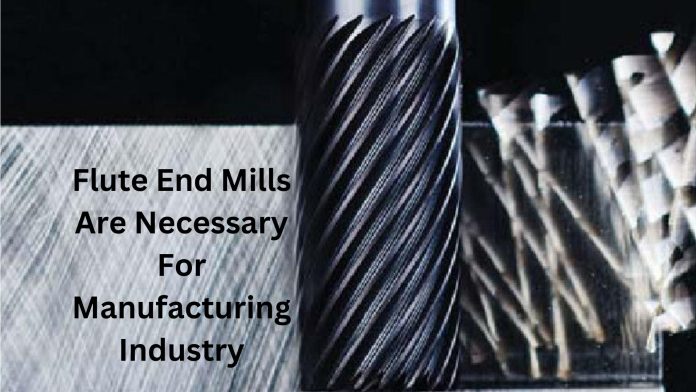Last Updated on April 7, 2024 by Umer Malik
In the manufacturing process, flute end mills are essential as they make the process easy of shaping and cutting. These multi-flute end mills are utilized for making shapes and gaps in a workpiece during milling, profiling, forming, slotting, counterboring, penetrating, and reaming applications. Flutes are designed in this type, where the cutting teeth are attached to the faces and the end of the body. It could be used to cut multiple materials in a few directions. Multi-flute end mills make a much way better wrap-up than two and three-flute tolls. Idealize for fringe and wrap-up milling.
What are flutes:-
Everyone can easily recognize flutes. These are the spiraled grooves, which are attached deeply to the tools. It gives the permission to chip for formation and clearing. Efficiently, multi-flute end mills are part of the life system of tools that allows the end mill to cut on its edge.
One thing which has to be taken into consideration during tool selection is the flute count. Something which is already secured in depth. For the most part, the lower the flute number, the bigger the flute valley. Which is a space between the cutting edges. This void influence the quality of the devices. During machining harder materials such as steel, tool quality gets to be a bigger factor, and higher flute counts are regularly utilized.
Reasons for end mills’ importance:-
An end mill highlights numerous distinctive measurements that could be recorded in a tool description. It is necessary to get to know about the dimensions which could impact tool selection. Also, how could small choices make all the distinctions when the tool is in motion? Multi-flute end mills are very necessary for the modern tool industry as it gives fine-quality shapes to tools. There are a few reasons, which clarify that why multiple flute end mills are very essential for the modern manufacturing industry.
Different tip shapes
Every flute end mills have its different types of shapes. They are designed to complete different purposes. Ball nose, square, corner radius, and chamfer are some of the common cutter shape types of flute end mills.
Ball nose mills:- They are perfect for 3D formwork nourishes and speeds. Moreover, it creates a rounded pass.
Radius flute end mills:- It is most suggested by the manufacturers as it guaranteed that the cutting work will be done smoothly and chips will be removed. Radius edges increase corner edge quality and deliver the desired radius. Also, complete the functional print requirement.
Chamfer flute end mills:- It will make a cutting activity that helps in breaking chips in most materials. Chamfering permits heavier nourishment rates and more effective production. Their angled profile permits chamfer, slope, and other angled cuts in materials such as aluminum, brass, bronze, press, and steel.
Square flute end mills:- It is also known as flare end mills. Square flute end mills normally used general milling applications like profiling, plunge cutting, milling square shoulders and slotting. It creates a sharp edge at the foot of the openings and pockets of workpieces. In addition to this, chips are attached to the cutting heads of flute end mills. Which ensures the safety of the end mill or workpiece. Square end mills are utilized on CNC or manual processing machines.
High speed
In the case of a flute end mill, high speed is also known as “feed rate”. It uses the feed rate for grinding tools. The foremost vital viewpoint of milling with carbide end mills is to run the device at the right rpm and bolster rate. The movement of rotation is known as “speed”. Speed in which the router or spindle could turn the cutting tool. The feed rate and spindle are different from each other based on the material, which has to be cut. Shaft speed that is as well quick combined with a moderate bolster rate could result in burning or melting.
Whenever you have to select a cutting tool, always make a strategy. Where the grinding tool could balance the feed rate and spindle speed by performing two passes on the workpiece. The first pass would help to discharge a huge number of chips. The other one, would not require an aggressive speed of a cut. Also, it could give a smoother finish at a high speed.
Numerous Types of flutes
Different type of flutes provides different purposes. Whereas, flute end mills with fewer flutes could provide better clearance. However, if flutes are more then it would be able to complete a product with fine finishing and less vibration.
Summarize
Multiple flute end mills have taken a very important role as they are obliged to complete different purposes. They give different shapes and speeds to the grinding tool so they could utilize in manufacturing work. Flute end mills have numerous types. Two flute end mills, five and more than this are attached with tolls, which smoothly do the work and fastest according to their shape.













